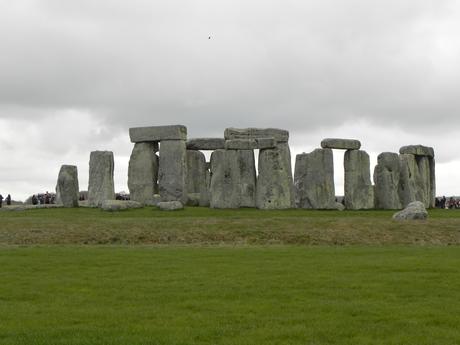Okay, so I’ve been captivated by the monoliths. You know, the ones that even make the New York Times. These artistic pieces show up, unexpectedly, and unexplainedly, around the world. The trend began in 2020 in Utah, as far as anybody knows. These shiny pillars are excellently meme-worthy and are darlings of the internet. And their history goes back before 2020. Even before Stanley Kubrick. You see, most news stories point out that Kubrick’s 2001: A Space Odyssey—one of the most influential movies ever made—established the idea of monoliths as being alien beacons (a favorite kind of beacon). People instantly know what a monolith symbolizes. Or at least they think they do. But monoliths have so, so much more to offer.
Perhaps the most famous monoliths in the world are found at Stonehenge. Mysterious and beautiful, this monolithic ring has captured the imagination for generations. When my wife and I lived in Scotland, we made a point of seeing as many stone circles as we could. Way up in the Orkney Islands the Ring of Brodgar was probably the most impressive of them, owing to, in large part, its remoteness. Standing next to these tall monoliths makes you realize how small people are but also what they can achieve when they cooperate. While the UK may be better known for its monolith circles, even older ones appear elsewhere. Rujm el-Hiri, for example, in Israel. Although not a circle, the monolithic pillars at Göbekli Tepe should be rewriting history books. Why the monolith?

Freudians would point to Tuto Fela in Ethiopia or other phallic architecture, but my mind tends toward Rapa Nui, or Easter Island. The human being tends to stand taller than wide. Evolutionary biologists tell us that was to help us see over the tall grass of the savannah. (And if you doubt grass gets that tall, visit my yard sometime in the summer.) These monuments seem to symbolize more that the procreative architecture of male human anatomy. They seem to point to our ability to see over the obstacles in our way. They seem to say, when people are divided against each other the plains remain barren. When they decide to work together, Stonehenge emerges. I don’t know the motivations of these modern artists. I do admire their ability to put these monoliths into remote locations without leaving evidence of how they did it. I really appreciate those creatures that stand tall and have a spirit of cooperation, even if others just don’t see the point.
